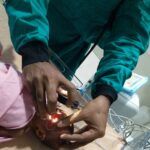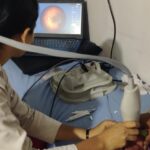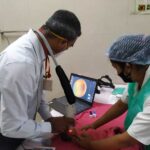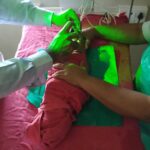Case studies
Convergent Squint - treated with glasses only!
Often times, merely giving the correct spectacle correction can treat the inward deviation of the eyes in children. These children have high plus power, which reduces as the child grows older and in some cases he/she could be completely weaned off glasses.


Squint at birth - treated with surgery
This type of deviation presents from the first 6 months of life. It is a misconception among general population that as the child becomes older, the squint gets corrected or surgery should be done after 15-18 years of age. On the contrary surgery at an early age is the best option for retaining and regaining quality vision in both eyes.


Childhood Squints – Surgery is the mainstay
Outward or exo deviation of the eye is a common occurrence in an eye clinic. Many such children have a milder form of the disorder, which can be treated with eye exercises. A few children need surgical correction for better alignment of eyes leading to better 3-dimensional vision.




Adult Squints- Age No Bar
Squint can be corrected at any age. Surgical straightening of eyes not only has a tremendous psychosocial impact but also improves the field and depth of vision.




Cataracts in babies – an ophthalmic emergency
Although cataracts occur mostly in old age, children can also be affected by it either from birth or later. Microincision cataract surgery with or without intraocular lens, done at the earliest, along with postoperative spectacle correction and vision therapy restores useful vision in these children.


Vision Therapy – lazy eye no more
Suboptimal vision due to ‘lazy eye’ deprives many people of various job opportunities. It often requires a multidisciplinary approach and gives most gratifying results when started early.


Retinopathy of Prematurity – small eyes…big difference
Premature babies are prone to retinal bleeding from fragile blood vessels in the eye, resulting in permanent loss of vision. Our experience in managing such blinding disease over the past decade is now augmented with a novel imaging camera system (ROPCAM) that allows early and easy identification of such a problem.






INTRAVITREAL INJECTIONS
Intraocular injections (monoclonal antibodies) are safely done with good visual outcomes. Injections need monthly or bimonthly repetition for best results. Control of systemic factors plays a very important role to help sustain the visual benefit and limit the number of injections. Aflibercept, Ranibizumab and biosimilars of these two are commonly used to treat retinal edema.



